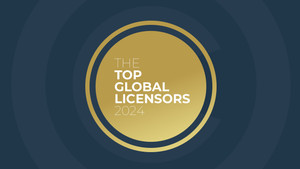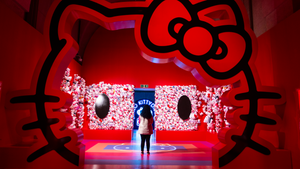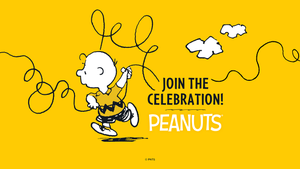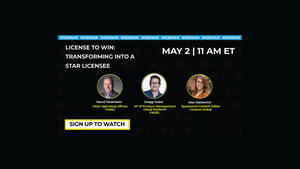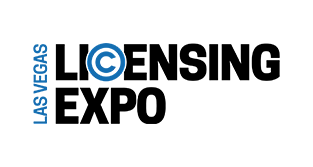Sports Licensing Roundtable
]> Sports licensing has undergone tremendous change over the last five years, partially resulting from an economic downturn, retail consolidation, licensee bankruptcies,
April 6, 2018

]>

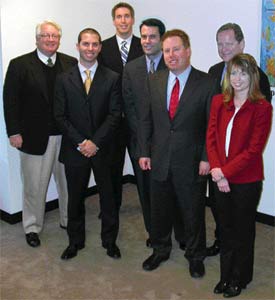
Sports licensing has undergone tremendous change over the last five years, partially resulting from an economic downturn, retail consolidation, licensee bankruptcies, and category expansion. Several of the major leagues turned to a model of one or two exclusive licensees, while others formulated new distribution strategies. Today, sports licensing appears to be on the rebound: Estimated worldwide sales of sports licensed products jumped 8.4 percent to $17.9 billionin 2002, according to License! research.Key executives from four major leagues—NFL, NBA, NHL, and MLS—plus NASCAR and PGA TOUR gathered in License!’s New York offices for the magazine’s first sports licensing roundtable, moderated by License! Managing Editor Lorri Freifeld. MLB’s Howard Smith couldn’t attend in person but provided input. The discussion centered on the sports licensing business, retail consolidation and exclusivity, ethnic marketing, international expansion, and growth opportunities.
License!: How has your business and the sports licensing business changed in the last five years?
Sal LaRocca: Our business has gotten better. We expect this season to be the biggest year in merchandising history for the NBA, primarily driven by the resurrection of our business in the urban and entertainment communities. The retail climate has changed dramatically with significant consolidation. As a result, we've had to focus more directly on growing our business with specific retailers and work a lot harder at maintaining our presence on key sales floors throughout the country. We've been able to find pockets of the market that have been continually reinforcing our message to that key consumer and our relevance in the urban/entertainment market, whether it's Hardwood Classics or our new women's line, nba4her. The leading sports specialty retailers have come back to our business in a significant way. There is now a wider variety of teams, players, and product. Consumers are prepared to spend significant amounts of money on things they find appealing, particularly in the apparel category. A wide assortment of NBA apparel ranging in price points from $150 to $400 is available, and we've seen no resistance at the retail and consumer levels to those price points. The mass market for the NBA has never been an area we've developed appropriately. That's an opportunity going forward. The NBA Store on Fifth Avenue in Manhattan is doing well: For the third year in a row, we will have an operating profit, and we've increased the business 2.5 times since we opened five years ago.
Brian Jennings: What's different now is the strategic management of the business in that the supply and demand is more in line with the marketplace and the product is more consumer centric. Previously we had more licensees, which accelerated the life cycle of certain products. Now, at all the leagues, what's important is who's coming on to produce the product for your league and brand. The financial wherewithal of the company, production capabilities, distribution and channel management strategies are being analyzed more closely to make sure they share the vision of where the brand can go and what the growth opportunities are.
Hockey continues to have a very strong fan base. Our business continues to be done at the local retail level rather than the national level. We've seen 10 percent increases in each of the last two years. We anticipate another good year this year.. We have unique product assortments with Wal-Mart and Target and also have a unique distribution channel in the 500 to 700 skate and surf shops that are very specialized, where the hard-core, active participant goes to purchase equipment. We're spending more time cultivating specialty retailers such as Champs and Finish Line since we haven't seen the uptick there that we would have liked, but we have strong distribution at the full-line specialty and sporting goods stores. Our online business is very strong, including a 28 percent increase year to date.
Howard Smith: Five years ago, the sports licensing business was in the midst of a down cycle, which forced us to re-evaluate our licensing business model. Since that time we've focused on limiting the number of licensing partners, as well as focusing on companies that are more invested in, and responsive to, our business. This philosophy is best illustrated in the apparel sector with what we call "strategic exclusivity." Strategic exclusivity provides certain partners the sole rights to particular segments of our business. This philosophy has provided our licensees with the leverage necessary to maximize the value of our brand. 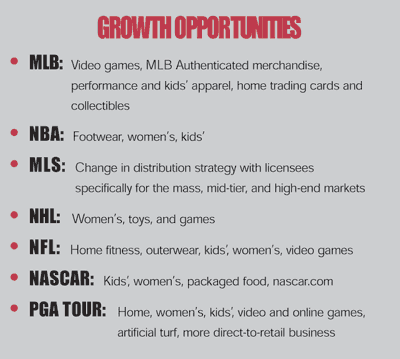

From a retail perspective, we haven't shifted from mass to class. Our strategy continues to be a matter of making sure we have the right products in the right retail outlets at the appropriate price points.
Stuart Crystal: Major League Soccer is only seven years old. The major shift in business in the last two years has been from the concession business to a reasonable retail business. Concessions now represent 20 to 25 percent of our business, while there are 300 or 400 soccer specialty stores around the country we can sell to, and they've become more and more supportive. We also now have a video game business with licensee Electronic Arts. Retail sales of licensed product have been fivefold. We think we're slowly getting there. We haven't really captured that "fashion consumer" yet; we're on the verge of that, and that will take us to the next level.
Mark Holtzman: Our business has undergone significant change as key licensees such as Starter, Pro Players, and Apex-which sold in all channels-went out of business. We started to bring in big-box licensees such as Adidas, Reebok, and Nike whose businesses were more diverse and not totally dependent on us. But that model wasn't right for those companies either. We had to embark on something radically new. Because we have such a broad demographic-on a Sunday, you have 8-year-old kids watching a football game with their 75-year-old grandparents, for example-we felt we could take some risks that might be tougher for other sports. Football has always been more team affinity related than player related. We went to a model of more exclusivity both on hardlines and apparel. Five years ago, we had 250 hardlines and 50 apparel licensees; today, we have about 100 hardlines and six apparel licensees. We believe in the model that less is better and that channel exclusivity works for us, meaning specific apparel is developed for specific channels and only sold in those channels. We are getting close to selling as many units of product as in the glory days with much healthier margins. The upper tier continues to be the bellwether for our performance product, and we have to focus on keeping product relevant in that tier and creating differentiation between channels. We also want to become more fashionable at the mid-tier, and JCPenney and Sears are starting to step up there. Clearly, we also have exclusive product at the mass tier, too. In addition, our business is fueled by the growth of video games-specifically those by Electronic Arts-while trading cards have taken a significant hit.
Jennings: Part of the reason for the decline of the trading card business in general is that the younger generation of kids is into interactive toys. So some of the uptick we're seeing in the video game business is going to come at the expense of the trading card business. The other factor is the unknown in that what drives trading card sales is rookies and milestones-and those are two things you can never anticipate on an annual basis.
LaRocca: NBA rookies Carmelo Anthony and LeBron James are helping our business. Sales of Cavaliers and Nuggets merchandise are up. But I don't think our uptick in sales necessarily has any effect on the trading card business in other sports.
Crystal: We just executed a contract with trading card company Upper Deck. So I credit you [LaRocca] for helping me.
Holtzman: Unlike in football, basketball players don't wear helmets, so they are recognizable, and their faces are marketable. We're working with the trading card and video game people to collectively market the rookie class without helmets and acclimate the consumer to our new talent.
Mark Dyer: Our equivalent of the trading card business is the die-cast collector car business, which has been an amazing business for us in the last 10 years. We've seen some leveling off there this year, partly because of the economy. And, of course, there was a blow to the industry with the passing of Dale Earnhardt. But Dale Earnhardt Jr. has been a national phenomenon and that's been a big help.
In terms of our overall business, the most dramatic impact for NASCAR in the last five years has been the TV package-putting races on national TV on NBC, TNT, FOX, and FX. We got a late start in TV-our first live network TV event was in 1979, but now NASCAR is seen 38 weekends a year in the U.S. and in 100-plus other countries. This year, we have a strong ratings story, which is key because retailers are influenced by what they see on TV. Our biggest home run has been NASCAR Fan Days at Wal-Mart. NASCAR has a natural "in" with Wal-Mart because the NASCAR customer is the Wal-Mart customer-mainstream America. We spend a lot of time with Wal-Mart, and our athletes go there regularly. However, we're not as strong in the upstairs tier, and we're trying to organize and provide more services to the network of mom-and-pop hobby shops and NASCAR merchandise businesses across the country.
Leo McCullagh: We're a little different from the other leagues here in that we're a not-for-profit and we do not have teams and jerseys, no authentics, etc. Our players are independent contractors; we don't have rights to their images, except for TV. So from a licensing perspective, we're about the PGA TOUR logo or the "swinging golfer" as we call it. Our retail licensing business was structured primarily with the single-focus of trying to build the brand. Our biggest change of late has been to move away from single licensee or category focus to a much broader base of licensees. We've gone from one apparel licensee to eight, for example, finding companies that already had established brands in golf. Now we can co-brand for our retail constituents. We are also a little different in that we have had our own licensed stores for a long time (more than 12 years), including the 41 PGA TOUR Shops in airports that deliver exposure to more than 250 million people who are fans or potential fans. Similarly our 32,000-square-foot flagship store, The PGA TOUR Stop at the World Golf Village in St. Augustine, FL, is a world-class golf retailing experience that continues our connection with the golf fan. We are still working out how to be in the mass market, but we're talking with several potential retail partners. We have a family of brands with the PGA TOUR, the Champions Tour, and the NationwideTour, and we're bringing all of those together in the marketplace in a way that makes sense. Finally, we believe that direct-to-retail licenses are in our future, and we hope to have an announcement about that soon.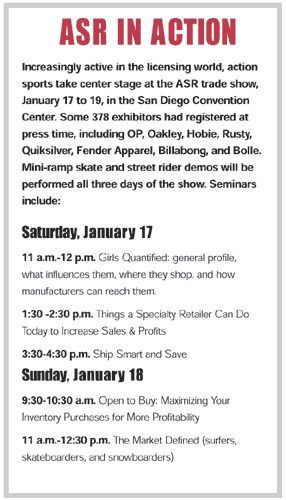

L!: How has the shrinking retail environment affected your business?
Jennings: Consolidation has affected business across all supply chains. As licensors, the way we manage our business and the licensees we choose to do business with will become vitally important. This will entail increased sophistication in how you analyze the market. For example, retailers will pass on the costs of new technology (i.e., radio frequency bar codes) to the manufacturers, and we need to take that into consideration. As for the fight for shelf space, it's not just having the right product, it's your ability to advertise and market that product and make sure you can demonstrate to that retailer that you will drive motivated feet into the store. That's done through tapping your existing fan base and casting a wider net to get a broader fan base. And it's how you're able to service it. Retailers are giving the square footage to the manufacturers that can service it. All the onus is falling back on the manufacturer to manage and run that business. You have to be able to guarantee them certain margins and performance.
LaRocca: Retail consolidation actually has helped our business. This is projected to be our strongest year in terms of merchandise sales, so if there are 50 percent fewer doors today than 10 years ago, doing that math would lead you to believe consolidation has been a big help. If you have compelling product that retailers feel will drive traffic into stores and subsequently drive purchases, they'll be willing to make the shelf space commitment to you in both the short and long term.
Smith: Our business continues to grow despite the shrinking retail environment. While the number of retail outlets may be different, our objective remains the same: to offer the high value associated with the Major League Baseball brand. We have become more active in creating meaningful promotions that keep our brand in front of the consumer from the start of spring training until after the World Series. We work with our retail partners to deliver a full calendar of events in which they are invested in the game and, in turn, we're invested in them.
Crystal: We did not have broad distribution to begin with, so the consolidation didn't really affect us. If anything, it's positive because it's survival of the fittest, so you'll have fewer doors and smarter retailers. It was inevitable for consolidation to happen in the sporting goods industry. There were always a lot of strong regional sporting goods retailers and some national ones, and now some of the smaller ones are dropping out or being acquired. There are many industries in this country dominated by two or three big retailers-just look at the home improvement industry with The Home Depot and Lowe's. It only becomes a negative when one player becomes too dominant.
Holtzman: Consolidation has forced us to be smarter and do better business. The retail players left standing are the ones that want to be in the market for the long term. I'm much more comfortable investing money in how our brand shows up in those retailers because there will be both a short-term and long-term return. From the licensee side, you now have employees who work onsite at the retailers who make sure the business functions smoothly. Before that, it wasn't possible because it would have cost too much. We've pooled resources with our main partners, both on the soft and hard goods side and been able to develop targeted strategies against different tiers. It was tougher to do that when you had many more people selling your product. If you look at the major retailers that carry NFL product, there's been a significant uptick in product quality, volume, and margins over the last five years.
Dyer: I think consolidation is an opportunity, but I'm not as concerned about the retail landscape as I am about whether we have our act together on the marketing side, whether it's co-branding, licensing, or sponsorships. As Wal-Mart gets stronger, it's good for us because we have a strong relationship and licensees there. I understand some brands are wary of Wal-Mart, but they need to have a strong relationship with the retailer because Wal-Mart certainly is not getting any smaller.
Jennings: A by-product of consolidation is that retailers are becoming manufacturers and vice versa. That's something to pay attention to because the ones that are not able to go forward with mass retailers will find ways of taking their brands upstairs or direct to consumers. The bigger will get bigger, and the smaller will get more specialized.
McCullagh: Consolidation is a big opportunity for us. Golf is hot. Sporting goods stores that never traditionally carried our product now are calling us. In fact, Gart's now has more than 20 in-store golf shops. The mass marketers, who don't call anybody, now are calling us and talking to our licensees. We are working through how to best position our brand family in this channel of distribution. One of our unique channels of distribution is green-grass golf shops. This channel is being impacted by retail consolidation. We believe that large golf stores will emerge, and while they may sell things besides golf products, they will have the effect on golf retail similar to what, say, Home Depot did to the home improvement industry in the late 1970s. If those large stores are successful, the small independents will struggle. We feel that retail consolidation will be a good thing for us overall.
L!: Is exclusivity at retail a necessary evil?
LaRocca: Exclusivity is necessary, but it's not an evil. It gives retailers an opportunity to be different, and it's a great way for them to be responsive to their customers.
Smith: Many retailers request exclusivity at retail, which is why, in some instances, we differentiate product lines. Many of our licensees offer custom programs for retailers to help meet their needs. We want to make the retailers happy, and we want to encourage them to continue to grow the business. It's a push-pull that is part of the retail landscape.
We also have used retail exclusivity to our advantage to help create a splash. Before the start of the season, we launched our new line of performance batting practice headwear and apparel with exclusive retail availability at Champs Sports. The jerseys and caps were available for two weeks at Champs before they became available elsewhere at retail. In turn, Champs heavily promoted the new line with window displays, in-store P.O.P., and an aggressive product buy to meet consumer demand.
Holtzman: We focus more on exclusivity by channel rather than by retailer. We're not against exclusivity, but for us to consider it, it has to be a retailer that has stepped up to the plate and is willing to show creativity and put marketing behind the effort. I like to see retailers come to us with potential ideas on how they think they can grow their piece of the business.
Shop-in-shops are more of a key part of our future strategy. Football is not just a game but a way of life-from the breakfast you have together as a family talking about the game to the trek out to the stadium to tailgate or let the kids participate in interactive games. In these shop-in-shops, we want to have the whole NFL experience-from barbecues to tents, inflatable chairs, and thermoses.
Smith: We strongly support having our products represented in a shop-in-shop retail environment. Having the brand represented together at retail is far more effective than having the products separated by category. To that end, we have engaged in exclusive shop-in-shop programs with Bob's Stores and Sports Authority.
Dyer: We have had success with shop-in-shops at Belk. We'll take those where we can get them. But at Wal-Mart, if you're going to command a certain amount of space, you'd better sell through or it's a short stay.
McCullagh: PGA TOUR is part of an initiative called Golf 20/20, which is part of the World Golf Foundation. This is a way for the whole golf industry to figure out how to grow our fan base to be as large as the NFL's by the year 2020. So clearly, we want to reach more women and children. Sometimes it may make sense to do this through shop-in-shops, while other times, it's through an exclusive product line. All of these things are embryonic for us. In the end, I don't think you can avoid doing one or the other. You have to work with your licensees to find the best way to present your product and reach your target audience.
L!: What are some of your initiatives in working with your client base to target specific ethnic consumers?
LaRocca: We have offices in Latin America, Asia, and Europe targeting all ethnicities. Basketball has grown in popularity in Latin America and Asia over the last 20 years, and we have a strong African-American fan base. We have a specific marketing focus on each of the groups based on our presence in those regions. So if you're watching an NBA game in Latin America, the marketing activity is geared largely to the Hispanic population.
Crystal: We have a strong global player presence with a large number of Hispanics on the teams. With Hispanics being the No. 1 minority group in this country, most marketers and retailers are waking up and trying to figure out how to reach this consumer. We've gotten a lot of interest of late from retailers and licensees because of this. We have initiatives at the league level, such as Spanish language radio and TV. The MVP last year was from Guatemala. I'm meeting soon after this roundtable with the Mexican Federation. I'm the licensing agent for the Mexican National Team in the U.S., and with Soccer United Marketing-the sister company to MLS-we'll be doing a tour and also selling sponsorships.
Jennings: Our local clubs do a great job with ethnic marketing. One example is that the New York Rangers broadcast games to Russia in their native language. Since hockey is expensive to play, we've taken a grassroots, all- inclusive approach to the game: The broadest base of involvement influences the game on all levels, ultimately driving interest to the NHL.
Dyer: The African-American and Hispanic segments are the fastest growing among our fan base. Our chairman, Brian France, formed our Diversity Council and is committed to promoting diversity in the sport. We'll probably have more than a dozen minority drivers at the grassroots level in 2004, and we're seeking sponsors. This sport is not cheap, it's not like you can just pick up a football or basketball. We're trying to find our Tiger Woods. NFL great Reggie White is teaming up with former NFL coach Joe Gibbs-who already has won two championships in this sport as an owner-to create a minority development program. On the Hispanic side, we're looking to take the NASCAR Craftsman Truck Series to Mexico City. We need more Hispanic drivers in our national series.
L!: How important is your international business and what are key international regions to watch?
LaRocca: We're seeing a global impact on our retail business. Now 22 percent of NBA players are born outside the U.S., and many of them are making a significant contribution to their teams, not just filling out the 10th, 11th, and 12th spots on the roster. In September, we were in France with the Spurs and Tony Parker, who's currently the most popular athlete in France. We're looking to go to Asia next year with Yao Ming and the Rockets. Retailers that are international in scope, such as Wal-Mart and Foot Locker, are talking about how they take the NBA in general and those players specifically global, and how they maximize their business in those specific markets. We now are developing under our relationship with Reebok our global footwear business. We have more than 35 styles of Reebok NBA footwear that is simultaneously being released on a global basis.
Crystal: The international market is a challenge for us because we have to compete with international soccer, which is much more dominant than American soccer. It's difficult to go into Manchester and convince people to buy a Metro Stars jersey. We will have some business globally because there's a fascination with Americana and soccer, but I don't expect it to be a significant part of our business unless we have a local hero playing in Major League Soccer; Korea and Guatemala would be examples of that.
Jennings: There are great international opportunities for the NHL. Some 30 percent of our players are international. I'm envious of Sal [LaRocca] because he's tapping into the Chinese marketplace with its huge population, while our players tend to be from smaller markets, such as the Nordics. We're committed to the World Cup of Hockey in September of next year, which is going to be a world-class stage for our world-class players. We're committed to having training camps and live games there.
Holtzman: We don't have much homegrown talent internationally. We've tried with NFL Europe to bring American players to Europe and blend them in with European stars, but it's been a tough go for us because our sport isn't as embedded overseas. It takes time. We sell product overseas, but it's based on American talent and teams. We have to pick our partners and work with a few key retailers to develop very targeted programs.
Dyer: We're still building out the U.S. in terms of track development and being on a growth trend in America.
We have a tremendous fan base in Canada, with the NASCAR Dodge Weekly series running in two markets, but we have to do a better job there. We also think there are some big opportunities in Mexico. We will start dedicating more staff to the international market this year.
McCullagh: Internationally, we have a large TV presence, and several of our marquee players are international, such as Vijay Singh and Ernie Els. Korea and Canada are two good licensed markets for us. We are just launching our business in Japan and expect big things there. Our apparel business is growing in the UK, and we have pockets of success in Southeast Asia. We have some success in South Africa, where the President's Cup was just played, but it's a very small market. In the end, we're still primarily focused on building our business in the U.S.
You May Also Like
